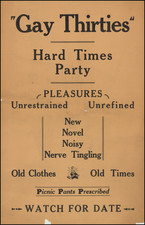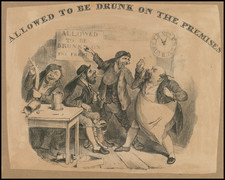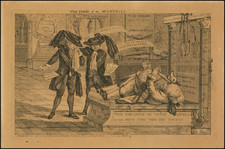An evocative satirical engraving, The Tombs of the Worthies by an unknown artist, critiques the political figures Lord North and Charles Fox through a macabre tableau set within a church, symbolizing their political demise following the defeat of the Coalition government.
In the aftermath of the American Revolutionary War, the British political landscape was marked by turbulence and realignment. The Coalition government, a controversial alliance between Charles Fox and Lord North, was seen as a desperate bid for power rather than a principled partnership. Their defeat in 1783 was a significant event, prompting widespread satirical commentary. This engraving captures the public's disillusionment with these political figures and their perceived betrayal of the nation's interests.
The engraving portrays a dramatic scene within a church, possibly modeled after Westminster Abbey, where notable political figures are mourned in exaggerated, theatrical fashion. Burke and Sheridan, dressed in deep mourning attire, weep ostentatiously over the tomb of North and Fox. The tomb inscription, "They were lovely in their lives and in their death they were not divided," drips with irony, highlighting the perceived insincerity and opportunism of the Coalition leaders.
Fox is depicted with a fox’s head, symbolizing cunning and deceit, while North’s obesity obscures much of his form, perhaps signifying his complacency and gluttony for power. Above their tomb, a gallows with nooses hangs ominously, inscribed "The true reward of such virtues," suggesting that their political downfall is a just punishment.
The background features additional tombs, each carrying its own satirical weight. The tomb of Jonathan Wilde, a notorious thief-taker, and Jemmy Twitcher, a character in The Beggar's Opera and a nickname for Lord Sandwich, serve to further indict the political corruption and moral bankruptcy perceived by the public. The reference to Walter Tyler, leader of the 1381 Peasant’s Revolt, invokes historical parallels of rebellion and discontent against unjust leadership.










![[ A 12 Poster Kukryniksy Satirical Series ] РИСУНКИ КУКРЫНИКСЫ [ Drawings of Kukryniksy ] 14 sheets (18 x 25.75 inches each)](https://storage.googleapis.com/raremaps/img/small/105236.jpg)

![(Anti-Nuclear Energy Poster) Le Nucleaire Creera des Emplois [Nuclear Will Create Jobs]](https://storage.googleapis.com/raremaps/img/small/82811.jpg)

![[ The Dying Bubble-Lord in the Lap of Madame Compagnie ] De stervende Bubbel-Heer in den schoot van Madame Compagne](https://storage.googleapis.com/raremaps/img/small/104094.jpg)